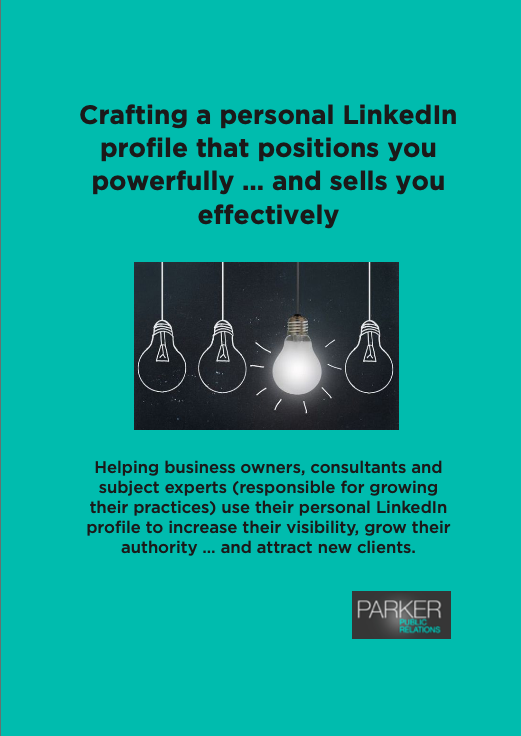As I have mentioned in previous blogs, a critical component of positioning yourself as a thought leader or the go-to expert in your field, is getting your personal branding right.
But where on earth should I start, is a regular refrain from clients and prospective clients. “Should I write that business book, start blogging or secure some coverage in the media or complete my social media profiles?”
“No, no, no”, is my usual response.
There are two very essential first-steps. You need to determine your area of specialisation and expertise, then create your all-important personal branding statement, tagline, slogan, catchline, strapline … call it what you will.
Only once you have crafted this, can you get down to the serious business of positioning yourself as thought leader.
How to create a personal branding statement
Remember, your personal branding statement is not a job title. Rather it’s the 1-2 sentence statement that clarifies what you do, for whom, the value you offer your audience and what makes you unique.
For example, mine is:
“PR expert takes SMEs from anonymity to visibility. Thought leadership coaching and personal branding for CEOs, innovators and academics.”
Sure it is a bit of a mouthful, but it does let people know:
The value I provide: I help individuals and business increase their visibility and profile.
Who my audience is: SMEs and business leaders, innovators and academics
My USP: I provide a one-stop shop for public relations and thought leadership coaching.
To better explain myself, here is another example. The following tagline is from a client who specialises in risk, compliance and performance by building frameworks, processes and systems.
“Creating robust teams, systems and processes to manage risk and improve organisational performance”
His value: He helps organisations minimize their risk and improve performance.
His audience: Organisations across the board.
His USP: He combines improving team performance and developing appropriate risk mitigation systems with building robust organisations.
Target your audience with your personal branding statement
As a thought leader, your audience is the group of people you are either targeting with your service or assisting with a problem. Attempt to be specific as possible right down to the actual industry, geography, age and demographic.
For example, I am assisting SMEs, CEOs, innovators and academics. I make this crystal clear in my statement.
Where my risk minimization client is concerned, he is not quite as laser-like in that the audience for his expertise is very broad and includes corporations, governments, non-governmental and governmental organisations, political organisations, charities, partnerships and educational institutions.
His scope is wide-open so using the term ‘organisations’ is absolutely preferable.
Keep your personal branding statement reasonably short
Less is more as they say. Your ability to describe exactly what you do in one sentence says a lot about your introspection and professional focus.
In some cases you have to take up two sentences (like me) but where possible, aim for one.
Your personal branding statement is not set in stone
You will soon find, as I have done, that you are constantly tinkering with your statement long after it’s been written up.
It’s easy to change it but don’t get too carried away and find you’re changing it weekly. On the flipside, don’t set and forget and never look at it again.
Even though it’s time consuming, your personal brand statement should be revised at least once a year to reflect changes and advancements in your professional career or what you stand for as a thought leader.
So in order to be effective, your personal branding statement needs to stay current.
If you are interested in learning how to raise your professional profile as an expert or thought leader sign up for a FREE CONSULTATION by contacting me at wendy@parkerpublicrelations.com.au or call: 0422 694 503.


